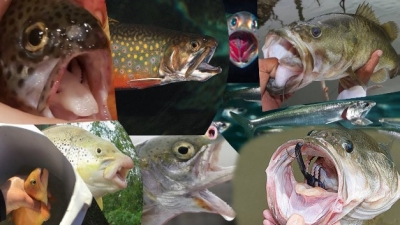
Grunt, croak, snore, squeak, click, and roar – the ocean is a noisy place! Many of these sounds are made by fish.
Some fish are named after the sound they make. One kind of fish rubs its teeth together to make a grunting noise. That fish is called a grunt. Another fish is called a croaker. Can you guess why?
Pollock, haddock, angelfish, grouper, and many other fish also make grunting noises. They grunt by vibrating some of the muscles against the swim bladder, an air-filled sac inside their bodies. The seahorse makes a clicking noise by hitting a bone on its head against a bone on its back.
Sharks sometimes make a roaring sound. But they aren’t really roaring – they’re burping! Many, sharks swallow air to help them stay close to the surface. When they want to dive deeper in the water, they have to burp up the air. The burp sounds like a roar.
Scientists study fish sounds to see if they mean anything. They say that many sounds seem to be made by male fish calling to female fish. Others are made by fish getting ready to fight.
Picture Credit : Google





